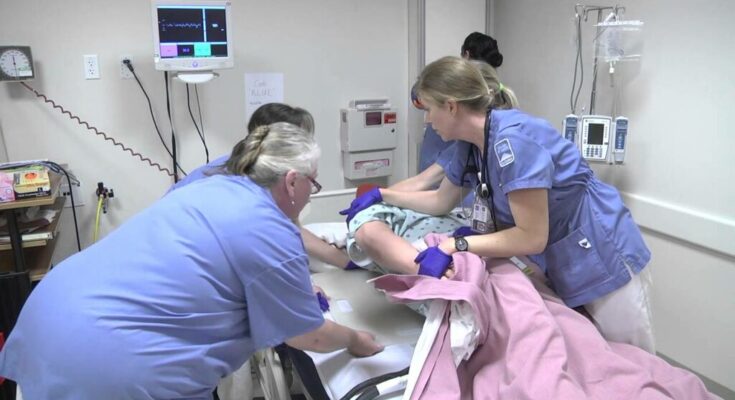Burns are among the most prevalent injuries in the United States. Almost everyone has had a bad burn, whether it was from a hot socket, hot food, hot water, cooker, etc. According to the CDC, close to 500,000 burn patients are expected to seek medical care each year.
South Shore ER offers expert and timely burns emergency room treatment near Alvin, TX. Continue reading this guide for more information, including causes of burns, types and symptoms of burns, management of burns by the ER, home remedies for burns, etc. Let’s start by looking into some of the causes of burns.
Causes of Burns
Some of the typical causes of burns include:
- Scalds caused by steam, hot food, or hot water.
- Excessive sun exposure.
- Heat from open flames or hot things, such as irons or stoves.
- Electricity from appliances or outlets
- Chemicals including battery acid, bleach, and cleansers.
What Are the Types and Symptoms of Burns?
- 3 Types of Burns
- Third-degree burns– Third-degree burns are a type of burn that causes damage to all the layers of skin, as well as the underlying fat, muscle, and bone.
- Second-degree burns– Second-degree burns cause damage to both the top and some underlying layers of skin.
- First-degree burns– This type of burns affects only the top layer of skin. This is a mild burn.
- Symptoms of Burns
- Third-degree burns– The symptoms of a third-degree burn include charred skin, a waxy or dry appearance, and little pain since the nerves are damaged. The combined effects of tissue injury and fluid loss can be severe. Third-degree burns can cause shock and even death. Call 911 or visit the nearest ER if you experience a third-degree burn.
- Second-degree burn– Second-degree burns can result in splotchy or red skin, extreme pain, lots of swelling, as well as blisters.
- First-degree burn– The symptoms of a first-degree burn include redness, discomfort, and mild swelling.
Management of Burns in an Emergency Room
Contingent upon the size, degree, and severity associated with the burn, emergency rooms may apply a variety of treatments:
- First-degree burns– Emergency department care is often unnecessary for first-degree burns. In most cases, a topical antibiotic can be used to manage and treat a first-degree burn with minimal scarring and low infection risk.
- Second-degree burns– Second-degree burns are often treated in the emergency room, particularly if they involve a big section of the body. The burns will be cleansed, washed, and bandaged, particularly if the afflicted region has blisters. In severe situations, surgery may be required to remove damaged tissue. Skin grafts may additionally be needed.
- Third-degree burns– Third-degree burns necessitate emergency room care and expert surgery to extract damaged tissue. A transfer to a specialized burn unit may be necessary. Without surgery, extensive scarring can occur, perhaps permanently damaging the underlying muscles and tendons. There is also a high risk of infection, which needs frequent cleaning and disinfection of the afflicted regions by skilled medical personnel.
Whilst most first and second-degree burns can heal without the assistance of a medical expert, it is better to be cautious than sorry.
Medical experts in an ER can also administer pain medications and fluids in some situations. Blistering burns may be quite painful. The good thing is that several sorts of pain medications may alleviate this type of pain.
More severe burns may cause a significant quantity of fluid loss from the skin. ER physicians are trained to predict fluid loss, which might require IV therapy.
Your ER physician can also determine if you should be sent to a burn center or follow up with a specialized burn specialist. This is only essential for serious burns or burns that cover a wide area of the body.
Home Remedies For Burns
You can treat a first-degree burn yourself. Here are some things that you can do.
- Immediately rinse the area with cold water. It is critical to cool down the skin as quickly as possible. This keeps the heat from inflicting more damage to deeper layers of the skin or tissue.
- Clean the burnt area with mild soap and water. Burned skin is more susceptible to infection; hence, cleaning is vital.
- Use antibiotic ointment on the burn. This can help prevent infection and prevent a bandage from adhering to the region.
- Cover the burn. You may use either gauze or a nonstick gauze pad.
- Take painkillers as recommended. It’s okay to use ibuprofen or acetaminophen to relieve discomfort.
Expert Burns Emergency Room Treatment Near Alvin, TX – Trust South Shore ER for Immediate Care!
The first thing that our experts do once you arrive at South Shore ER is to stabilize your situation. As an ER, we are prepared to deliver advanced care. Working with board-certified emergency doctors, our nurses have received training in Advanced Cardiac Life Support (ACLS) and are able to effectively prevent, manage, and treat shock caused by a serious burn. Following initial care, they may suggest that you be moved to a more advanced trauma or burn center if the burn is very severe. So, don’t hesitate to seek help from South Shore ER for your burn. Reach out to us today for more information regarding burns emergency room treatment near Alvin, TX! You can count on us! Your health is our top priority!




